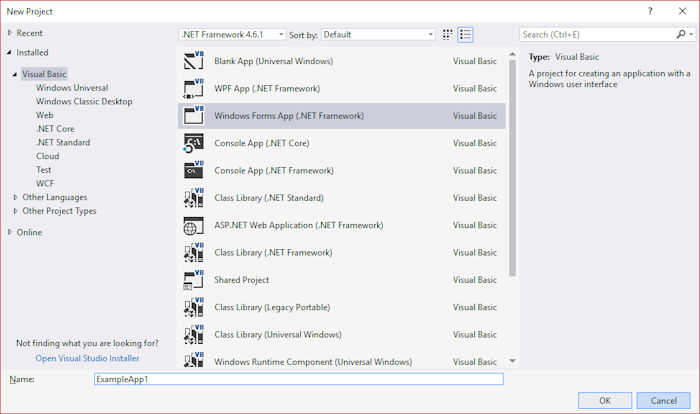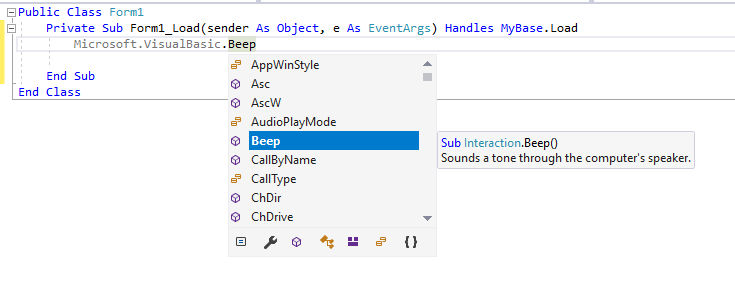

The .NET Framework was introduced in 2002 with Windows XP SP2 and Windows Server 2003. It consists of a large class library named the Framework Class Library (FCL). It provides interopability across several programming languages such as Visual Basic, C# and now F#. Programs run is a software environment called a Common Language Runtime (CLR), which is an application virtual machine to provide services such as security, memory management and exception handling.
On Windows machines, the Framework is stored in C:\Windows\Microsoft.NET\Framework or Framework64. Additional files can also be found in C:\Program files\Reference Assemblies. There are several versions, from version 1.0 to latest version which is 4.7. They do not replace each other but are an additional superset of a previous versions. Applications can be written for a specific or minimum version using a Software Development Kit or the Visual Studio suite.
Class libraries usually come under three areas: Microsoft or System with sub classes e.g. System.Net.dll, System.Security.dll, System.Web.dll, Microsoft.VisualBasic.dll etc. A completer reference guide is available on Microsoft's MSDN site.
When using Visual Studio, and you create an application using .NET Framework, and you start to enter code, access to function is easily available via auto-complete.

A Windows Form App will create an application with at least one form (window) to design a user interface. If you right click the window and select View Code or select the View menu and then Code, you will get a code window with a blank Class created. This is a public class, so other classes can access it.
Public Class Form1
End Class
In this class you can create class members such as methods (also called subroutines or functions), properties and variables. For example for the form window there is a Form_Load() method.
The method is Private so it cannot be accessed outside the class. It has two default parameters called sender and e.
Public Class Form1
Private Sub Form1_Load(sender As Object, e As EventArgs) Handles MyBase.Load
End Sub
End Class
If you type in the class name name e.g. Microsoft, dot, VisualBasic, dot, it will show available methods, values etc you can use in your code. E.g.

If you need to include other .NET Framework assemblies you can add them in the Solution or Project explorer or via the Project Properties.
Just select the ones from the list or browse for the library file use the Add button.
Another useful tip, is to use the Imports statement at the top of the code before any Class definitions. A neat feature is to use aliases, so instead of referening to the full name space you can use a short alias instead. E.g.
Imports VB = Microsoft.VisualBasic
and replace Microsoft.VisualBasic.Beep() with just VB.Beep().
In the References Add window you can also add references not only .NET Framework libraries, but legacy COM (Component) type libraies, Assemblies, and other Projects.